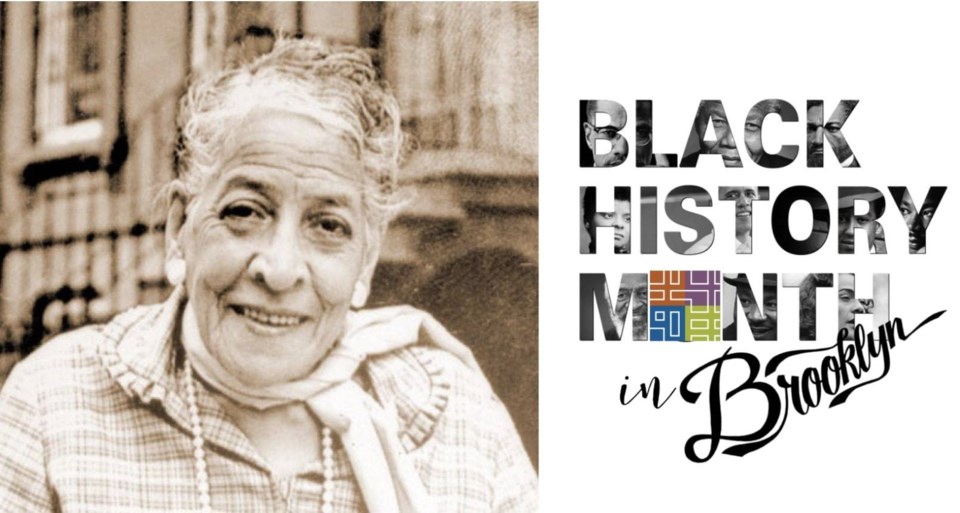Hattie Carthan was a community activist and environmentalist who was instrumental in improving the quality of life of Bedford-Stuyvesant. Nancy Wolf, a friend of Ms. Carthan once remarked, "Hattie Carthan was green long before anyone knew what green was about."
Born in 1900, Hattie Carthan was a Bedford-Stuyvesant resident who always had an interest in trees. She was a soft-spoken woman with a will of steel.
When she noticed conditions in her neighborhood beginning to deteriorate, Mrs. Carthan began replanting trees there and in the process helped found the Bedford-Stuyvesant Neighborhood Tree Corps and its army of resident supporters known as the Green Guerillas.
In 1971, at the age of 71, Carthan started the Tree Corps, a volunteer organization whose aim was to teach young people how to care for trees.The organization provided supplies, advice and encouragement for all types of urban community green spaces. The Green Guerillas were the force behind the resurgence of the community garden movement in the 1970s.
The organization began informally in 1974 with tactics as simple as throwing water balloons filled with seeds into abandoned lots; the positive response showed the overwhelming need for more green space in the inner city.
A proponent of strong neighborhood associations, Carthan became the chairwoman of the Bedford-Stuyvesant Beautification Committee — an effort that brought together 100 block associations in a project that added over 1,500 trees to the neighborhood.
"You know when Carthan made a call, you would just have to respond. That's all. There's no two ways about it," said City Council Member Al Vann of Carthan. "Obviously she had a lot of help; nobody does anything by themselves. But she was the one; she was the core, she was the one they would gravitate to."
Carthan also led the charge to preserve a particular Southern magnolia tree (Magnolia grandiflora) that became a symbol of the neighborhood. The tree, rare in the northeast, was brought on a ship from North Carolina in 1885.
Carthan not only succeeded in having a wall built to protect this tree but also spearheaded the successful attempt to designate it an official city landmark in 1970. It is one of only two trees to be designated as such (and, after the death of the Weeping beech tree in Queens in 1998, the only landmarked tree still standing).
Carthan continued her campaign by convincing the City to convert three nearby abandoned homes into the Magnolia Tree Earth Center. The brownstones on Lafayette and Marcy Avenues behind Hattie Carthan Garden date to the 1880s and now feature a mural depicting Mrs. Carthan. The Center gained not-for-profit status in 1972.
Hattie Carthan died in 1984, at the age 84. But her legacy lives on in Bed-Stuy. A year after Hattie Carthan's passing, Operation GreenThumb, a Parks initiative that facilitates the transformation of vacant city lots into community gardens, has revived Hattie Carthan's efforts and has continued her dream.
Funded largely by community-block grants from the Federal Housing and Urban Development program, the program enables communities to purchase plants, cleaning supplies and the necessary gardening tools to restore once-neglected properties. Often the gardens are enhanced with art from local artists, making the spots true neighborhood centers.
The City assigned the Magnolia Tree Earth Center and its gardens to the Parks Department in July 1997, and a watering system and new fencing was installed at the site soon after. In May 1998, the garden was named in honor of Mrs. Carthan.
Hattie Carthan was a true vanguard, not only for Bed-Stuy, but for all of Brooklyn. She started a movement that birthed a respect and appreciation for nature and a pride for her neighborhood, regardless of its economic condition. If not for her foresight, fortitude and valiant efforts, Bedford-Stuyvesant's natural green habitat might have never been.
Hattie Carthan, we acknowledge your efforts, celebrate your contributions and honor your memory.
*Sources, nycgovparks.org, gloria-dulan-wilson.blogspot.com




